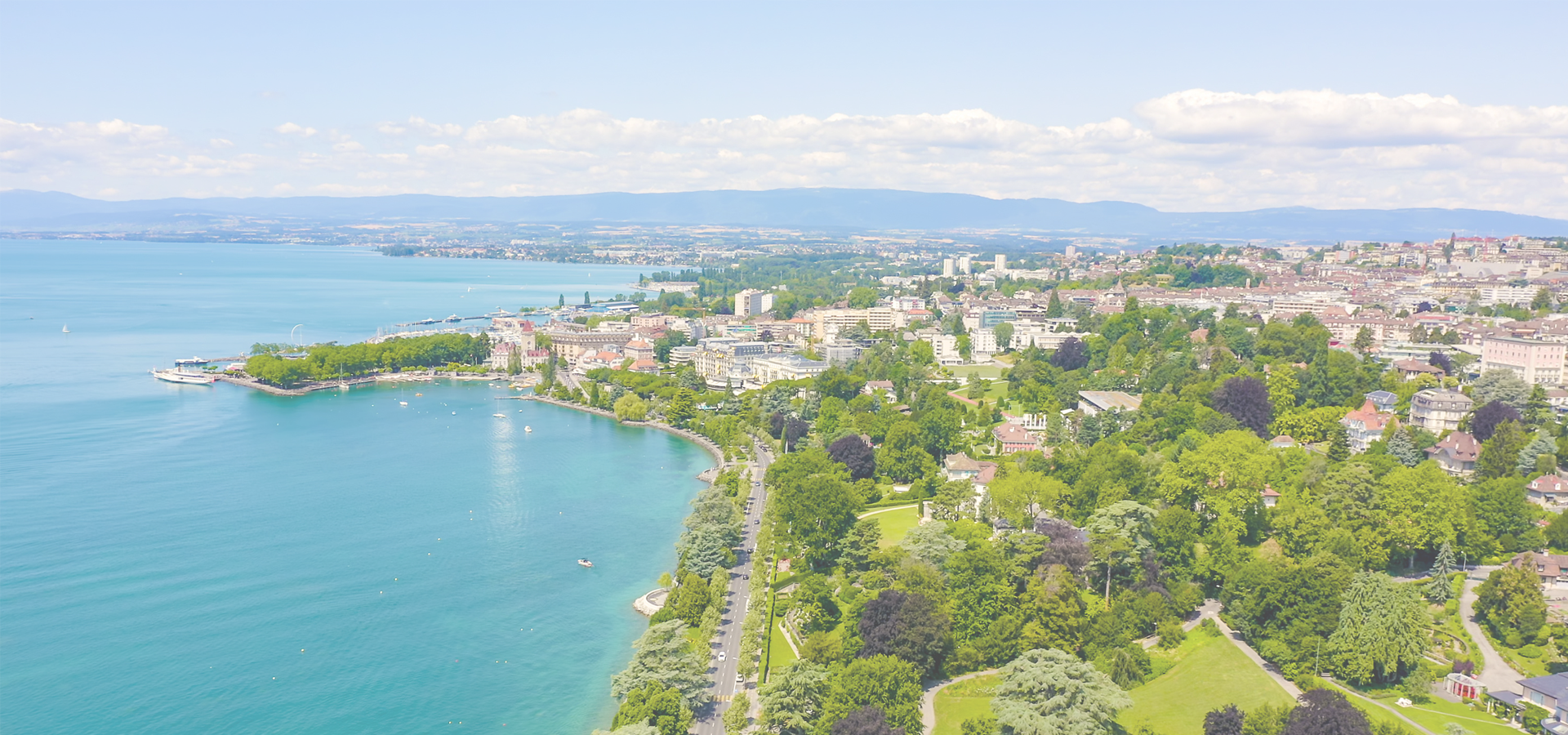Renens, Canton of Vaud, Switzerland
🇨🇭 Renens is a municipality in the canton of Vaud, Switzerland. It is located in the district of Ouest Lausannois, and is a suburb of the city of Lausanne. It is the fourth largest city in the canton. It is considered a very multiethnic town, as more than 50% of the inhabitants are resident foreign nationals from about a hundred different countries.
History Renens is first mentioned around 888-896 as in villa Runingis. Neolithic tombs (near Bourdonnette) and a necropolis from the High Middle Ages (near Caudrey) have been discovered in the town.
In the Middle Ages Renens was owned by the cathedral chapter of Lausanne which created a prebend there between 1233 and 1303. In 1555 Claude de Praroman exchanged his old Vuarrens prebend with Bern against that of Renens for which he obtained the lordship rights. The house he already owned at 'En Plait' becomes his castle (Chateau de Renens). Lausanne bought the seigneury in 1750. The castle, sold in 1752 to Jean Pierre Audibert, passed successively to the Doxat, Sandoz, Sauter and Burckhardt families. There are rumors that Mozart stayed in this castle when he visited Lausanne.
Renens was around that time still a small village where a few families owned the countryside: the castle of 'Renens-sur-Roche' (18th century) where the Roëlls, Auberjonois and Guyots succeeded each other, and the 'Ferme des Tilleuls' (Tilia farm), built at the beginning of the 18th century by the Praroman family, where Pierre-Elie Bergier lived.
Renens became a municipality in 1798, attributed to the district of Lausanne (1798-2006) with its own municipal legislative Council from 1901. In the 1950s Renens became a city, and in 2006 the capital of the district of West-Lausanne.
Geography Renens has an area, as of 2009, of 2.96–2.95 square km (1.14–1.14 sq mi) (depending on calculation method). Of this area, 0.1 km2 (0.039 sq mi) or 3.4% is used for agricultural purposes, while 0.07 km2 (0.027 sq mi) or 2.4% is forested. Of the rest of the land, 2.78 km2 (1.07 sq mi) or 93.9% is settled (buildings or roads).
Of the built up area, industrial buildings made up 13.9% of the total area while housing and buildings made up 41.6% and transportation infrastructure made up 28.7%. Power and water infrastructure as well as other special developed areas made up 3.4% of the area while parks, green belts and sports fields made up 6.4%. Out of the forested land, all of the forested land area is covered with heavy forests. Of the agricultural land, 1.0% is used for growing crops, while 1.7% is used for orchards or vine crops.
The municipality was part of the Lausanne District until it was dissolved on 31 August 2006, and Renens became part of the new district of Ouest Lausannois.
The municipality is the capital of the new district of Ouest lausannois. It is part of the agglomeration of Lausanne, and Lausanne Métro line 1 terminates at Renens railway station. The Swiss Federal Railway line connects Renens to Lausanne more directly, as well as offering some longer-distance trains. Renens is located close to junctions 17 and 18 of the A1 motorway.
Economy As of 2010, Renens had an unemployment rate of 7.6%. As of 2008, there were 8 people employed in the primary economic sector and about 1 business involved in this sector. 2,338 people were employed in the secondary sector and there were 153 businesses in this sector. 7,493 people were employed in the tertiary sector, with 579 businesses in this sector. There were 9,293 residents of the municipality who were employed in some capacity, of which females made up 43.5% of the workforce.
In 2008, the total number of full-time equivalent jobs was 8,699. The number of jobs in the primary sector was 7, all of which were in agriculture. The number of jobs in the secondary sector was 2,245 of which 1,048 or (46.7%) were in manufacturing and 855 (38.1%) were in construction. The number of jobs in the tertiary sector was 6,447. In the tertiary sector; 1,795 or 27.8% were in wholesale or retail sales or the repair of motor vehicles, 1,452 or 22.5% were in the movement and storage of goods, 244 or 3.8% were in a hotel or restaurant, 470 or 7.3% were in the information industry, 735 or 11.4% were the insurance or financial industry, 390 or 6.0% were technical professionals or scientists, 299 or 4.6% were in education and 500 or 7.8% were in health care.
In 2000, there were 7,789 workers who commuted into the municipality and 7,087 workers who commuted away. The municipality is a net importer of workers, with about 1.1 workers entering the municipality for every one leaving. About 2.2% of the workforce coming into Renens are coming from outside Switzerland. Of the working population, 31.7% used public transportation to get to work, and 49.8% used a private car.
Transportation The municipality has a railway station, Renens VD, that sits at the junction of multiple major railway lines. It has regular service to Lausanne, Geneva, and points beyond. It is also the western terminus of the Lausanne Métro.
Europe/Zurich/Canton_of_Vaud

Renens has a population of over 20,927 people. Renens also forms the centre of the wider Ouest Lausannois District which has a population of over 79,015 people. It is also a part of the larger Lausanne metropolitan area.
To set up a UBI Lab for Renens see: https://www.ubilabnetwork.org Twitter: https://twitter.com/UBILabNetwork
Twin Towns - Sister Cities Renens has links with:
🇨🇭 Dietikon, Switzerland